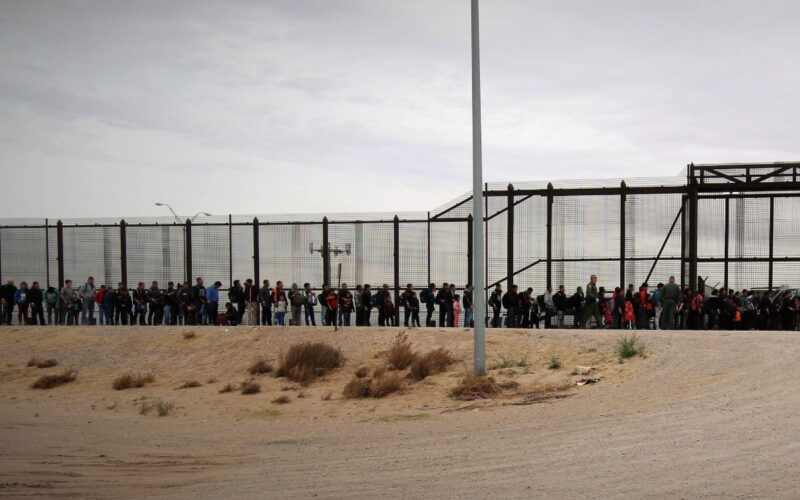Sign up here to receive The Yappie’s weekly briefing on Asian American + Pacific Islander politics and support our work by making a donation.
Fleeing political repression and economic hardship in their home countries, unprecedented numbers of Chinese and Indian migrants are coming to the U.S. through the U.S.-Mexico border. But staying in the U.S. has proven difficult due to the lack of formal pathways to citizenship and availability of visas and legal work permits for new arrivals.
The southern border has historically been viewed through the lens of Hispanic and Latino migrants, but data on Chinese and Indian migration through the southern border challenges this perspective.
- U.S. Border Patrol reported nearly 6,000 encounters with Chinese citizens at the southern border in December 2023—nearly 7 times the number of encounters in December 2022, per data from the Pew Research Center.
- Roughly 97,000 Indian migrants reportedly encountered U.S. Customs and Border Protection at the border in the 2023 fiscal year—nearly five times as many compared to the same period from 2019 to 2020, NBC News’ Sakshi Venkatraman reports.
Of note: Indians made up the third-largest group of undocumented immigrants in the United States in 2021, according to Pew Research Center.
How the law works: In order to legally immigrate or enter the U.S., people from foreign countries need a form of “authorized entry,” which comes in the form of travel or business visas. But federal backlogs have created a months-long—sometimes years-long—wait for certain visas and other immigration applications. As a result, many are choosing to come through the border rather than wait for an unknown length of time.
- Under U.S. immigration law, anyone who enters without a form of “authorized entry” must prove they have a legal right to remain in the country. This often means that applying for “asylum” status is a migrant’s only means to remain legally in the country.
- Applying for asylum, however, can also be a years-long process. Most of the time, applicants are turned down because the threshold to qualify is very high.
- To qualify for asylum, an applicant must prove that returning to their home country means facing a “credible fear of persecution” on account of their race, religion, nationality, political opinion, or membership in a particular social group.
Behind the scenes: Post-pandemic economic hardship across the globe has, in part, led to global increases in migration. For Chinese and Indian migrants, hopes of better economic outcomes and freedom from identity and religion-based discrimination and persecution has led some to make the journey from Asia to the United States.
- “[Chinese migrants] may cite reasons of economic crisis happening in China due to the impacts of the pandemic and/or human rights reasons (being persecuted in China for being LGBT, religious and cultural reasons etc),” San Francisco-based immigration advocate Jose Ng told AsAmNews’ Erin Chew.
- In both India and the U.S., civil rights groups and activists have accused Indian Prime Minister Narendra Modi of pushing a Hindu nationalist agenda, and for implementing policies discriminating against Muslims and other non-Hindu Indians.
Where things stand: Immigration to the U.S. has surged in recent years, and not just for Chinese and Indian ethnic groups. Immigration has also been the main driver for the country’s population growth as domestic population growth declines, a January study by the Brookings Institution found.
- Some have had to return to their home countries, however, after facing steep barriers to entry.
This story appeared as “The Big Story” in The Yappie’s April 23, 2024 newsletter.
The Yappie is your must-read briefing on AAPI power, politics, and influence, fiscally sponsored by the Asian American Journalists Association. Make a donation, subscribe, and follow us on Twitter (@theyappie). Send tips and feedback to [email protected].









